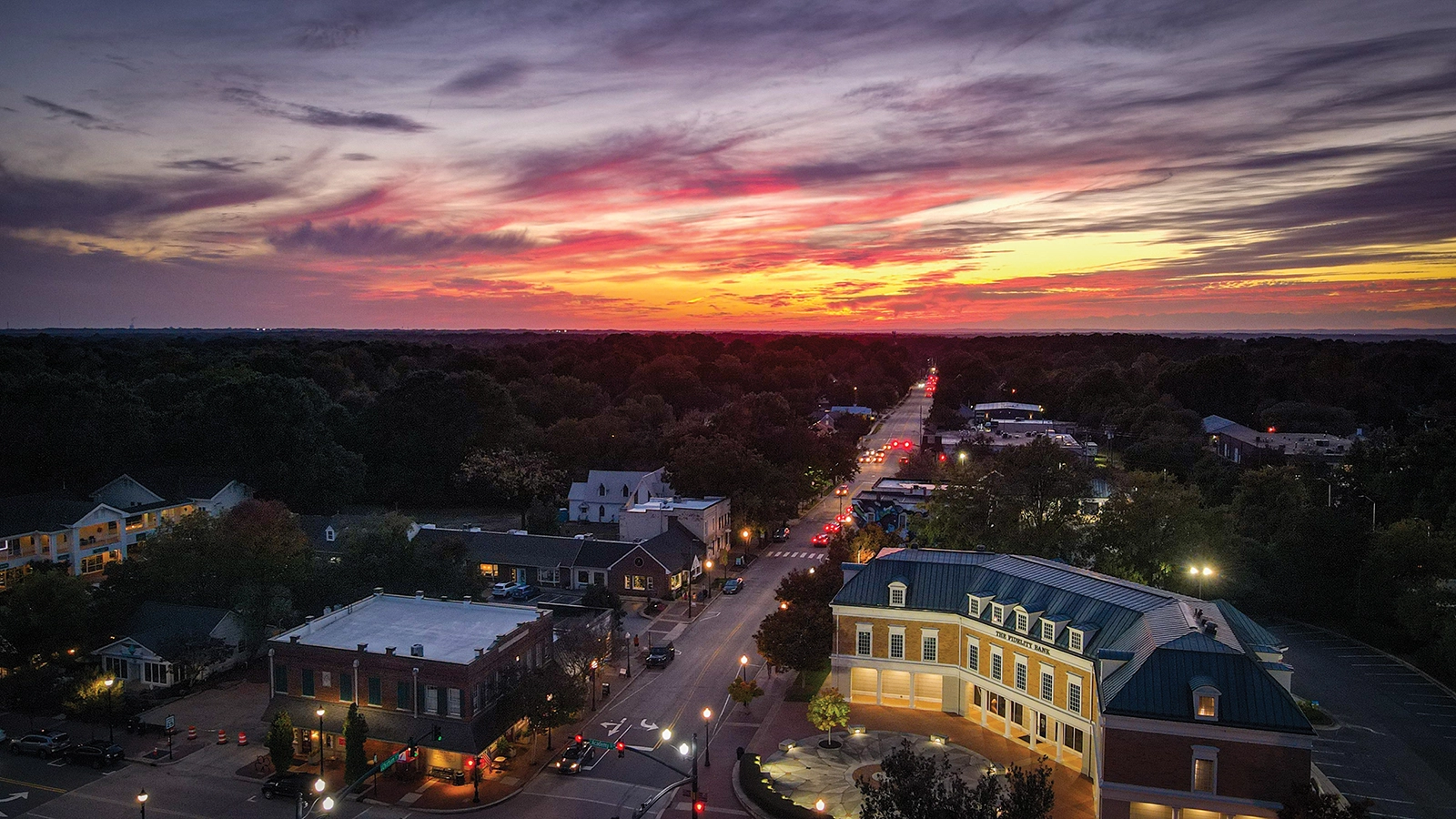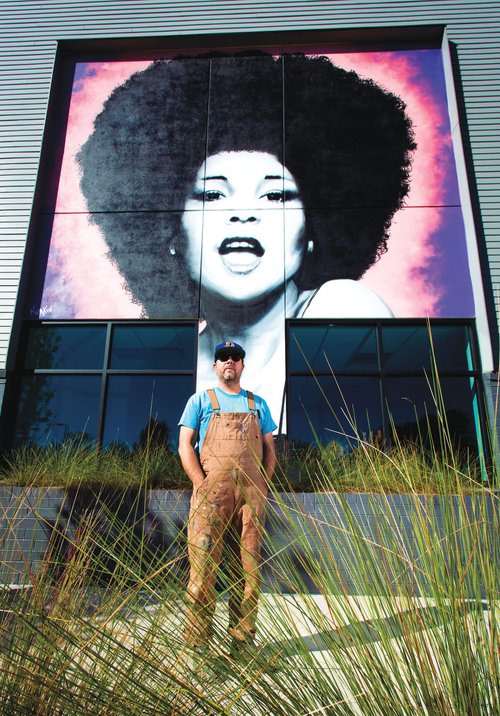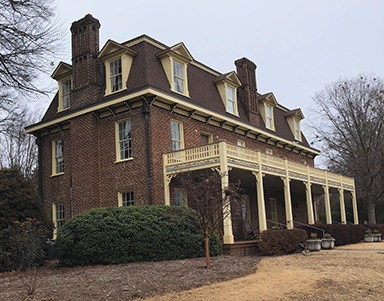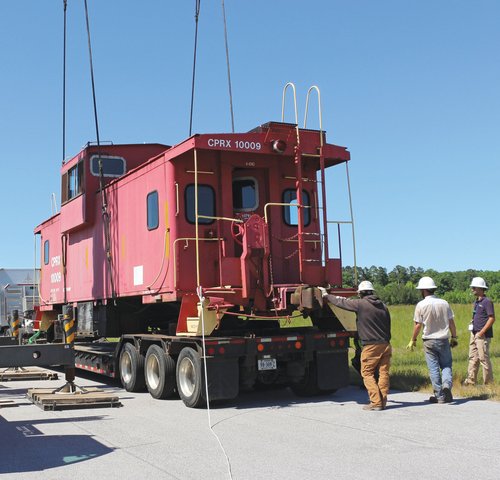BY KYLE MARIE McMAHON
Downtown Cary 20 years ago was a very different place from what it is today. The bones of today’s downtown were there, but the people weren’t. Mayor Harold Weinbrecht remembers leaving Town Hall after 5 p.m. and finding the area deserted.
So the Town Council discussed how to revitalize it, put the zoning in place and started with a park—modest at first. Investment in the park kicked off development for the rest of the area. “Now I leave Town Hall at 11 p.m. and there are people everywhere—[it went] from [being] a ghost town to something that’s alive,” says Weinbrecht. Since the groundbreaking of the current Downtown Cary Park, investment and development in the area has exploded.
In 2017, Cary adopted the Imagine Cary Community Plan—its vision for the entire town through 2040. It has been updated continually to meet with the changing times and adjusted based on new information, feedback and concerns. It will most likely be extended through 2050 and beyond.
Current Construction and Future Plans
The town will rely on private investors to bring their ideas to life, but Mayor Weinbrecht says the vision is clear: “It’s about balancing the town feel, but with the amenities of a larger municipality.”
The fact that Cary’s downtown was less developed initially and is less compact than those of neighboring cities means there’s more of a blank slate—more room for the town to design its downtown from the basics on up.
“We want it to blend into surrounding areas, to feel like it’s part of a whole,” he says. The design calls for limited building heights in certain areas, smooth transitions between them, walkability and plenty of open space.
The Community Plan breaks downtown Cary into five subareas. Central Chatham is “Cary’s Main Street,” the strip from the Old Apex Road traffic circle to Ward Street (just before the traffic circle next to Urban Park).

This is where the bulk of construction is happening, particularly at Rogers East and West (across from The Cary Theatre), Meridian East Chatham (near E. Chatham and Ward Streets), and Meridian Cary/Northwoods Jordan (on the corner of W. Chatham Street and S. Harrison Avenue).
Each of these is a mixed-use area with housing on the upper floors and the ground level open for office and retail, in addition to a parking deck. Only Rogers will open this year and will include the sushi restaurant Zest. “There has been a lot of interest from food and beverage companies, and hopefully we’ll start to see more soft retail,” says Scot Berry, Assistant Town Manager.
South Academy is called “Cary’s Cultural Arts Anchor” and includes the area south of Central Chatham, including Downtown Cary Park, Cary Regional Library and the Cary Arts Center. With the park complete, most of the work in this area is refinement—adding additional housing and finishing the Ivey-Ellington House for park employee offices. For now, the lawn at the old library site will remain an open space, though it may be developed later on.
West Chatham Gateway is the area around the Old Apex Road loop and will probably be the next area of expansion. This includes West End, a mixed-used development similar to Rogers, situated across from Vicious Fishes Brewery and South Line Brewing Co.
East Chatham Gateway, from Ward Street to E. Maynard Road, and North Academy, the area north of the railroad tracks, are still in the early stages of design but will also be mixed-use. Previous requests for proposals (RFPs), like the one for Town Hall, have given the town ideas about what to do with these areas, but development here won’t be happening soon.

Parking and Traffic Flow
Residents have already expressed concerns about parking in the Central Chatham area, and Berry says the town has created a group focused solely on this subject. Currently, there are numerous small-to-medium parking lots, limited street parking and the Town Hall and library parking decks, with the three Central Chatham decks coming within two years.
Mayor Weinbrecht acknowledges that while things look good for the next five years or so, they will have to keep considering parking as the area grows and changes.
Help will come in the form of the Downtown Cary Multi-Modal Center, which will shift the existing Amtrak depot to the other side of Harrison. The current depot only has a platform of approximately 400 feet for passengers to get off and on.
Often, trains have to move forward again to access baggage, causing even longer delays at the crossings on Academy and Harrison. The new depot will at least double the platform size, meaning faster load/unload times.
Additionally, the Multi-Modal Center will serve as a hub for alternatives to driving into downtown Cary, such as the regional bus system, bike and ride shares, the Bus Rapid Transit system and eventually, a possible commuter rail.
Mayor Weinbrecht is the most enthusiastic about connecting downtown with other areas close by, starting with the Walnut Creek Greenway, which is on the bond this fall. Long term, it will connect downtown Cary to South Hills via a three-mile greenway passing through Fenton and WakeMed Soccer Park.

When asked about the additional traffic, Berry says, “People are coming downtown to visit, so these roads are no longer cut-throughs. Maynard is the road to take for that.” But the slower traffic flow is intentional. “The traffic is slower because we want to make it walker-friendly, and a destination. We want it this way. We don’t want to change the pace,” says Mayor Weinbrecht.
Change is Difficult
Despite what has seemingly been a long planning, approval and construction process, residents worry about losing the old Cary—too much change, too soon. But Berry says that his feedback comes from leaving his office at 8 p.m. and seeing families out and about, restaurants full, the area busy.
The mayor agrees, saying the negativity stopped once the park was complete. But it is foremost in his mind. “We have to move forward, but keep development at a pace people can handle. It’s about balancing the need for progress with people’s perception of change,” he says.
But as Cary has changed and grown over the last 50 years to become the diverse and sought-after destination it is today, it will continue to develop to fit the ever-changing needs of its current residents and future generations. “Seeing Cary change has opened my eyes. We embrace all these different cultures. To be able to experience it right here is so vastly different from [how it was] when I grew up,” says Mayor Weinbrecht. “It’s exciting to be a part of this.”
Check out stories from around the Western Wake at 5westmag.com








